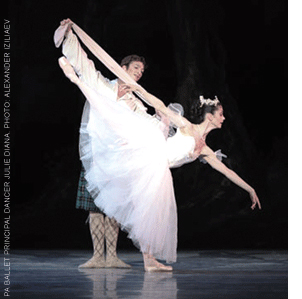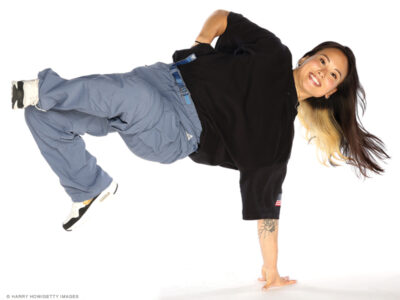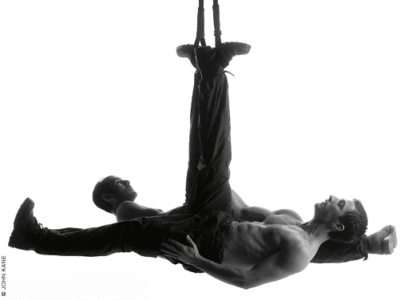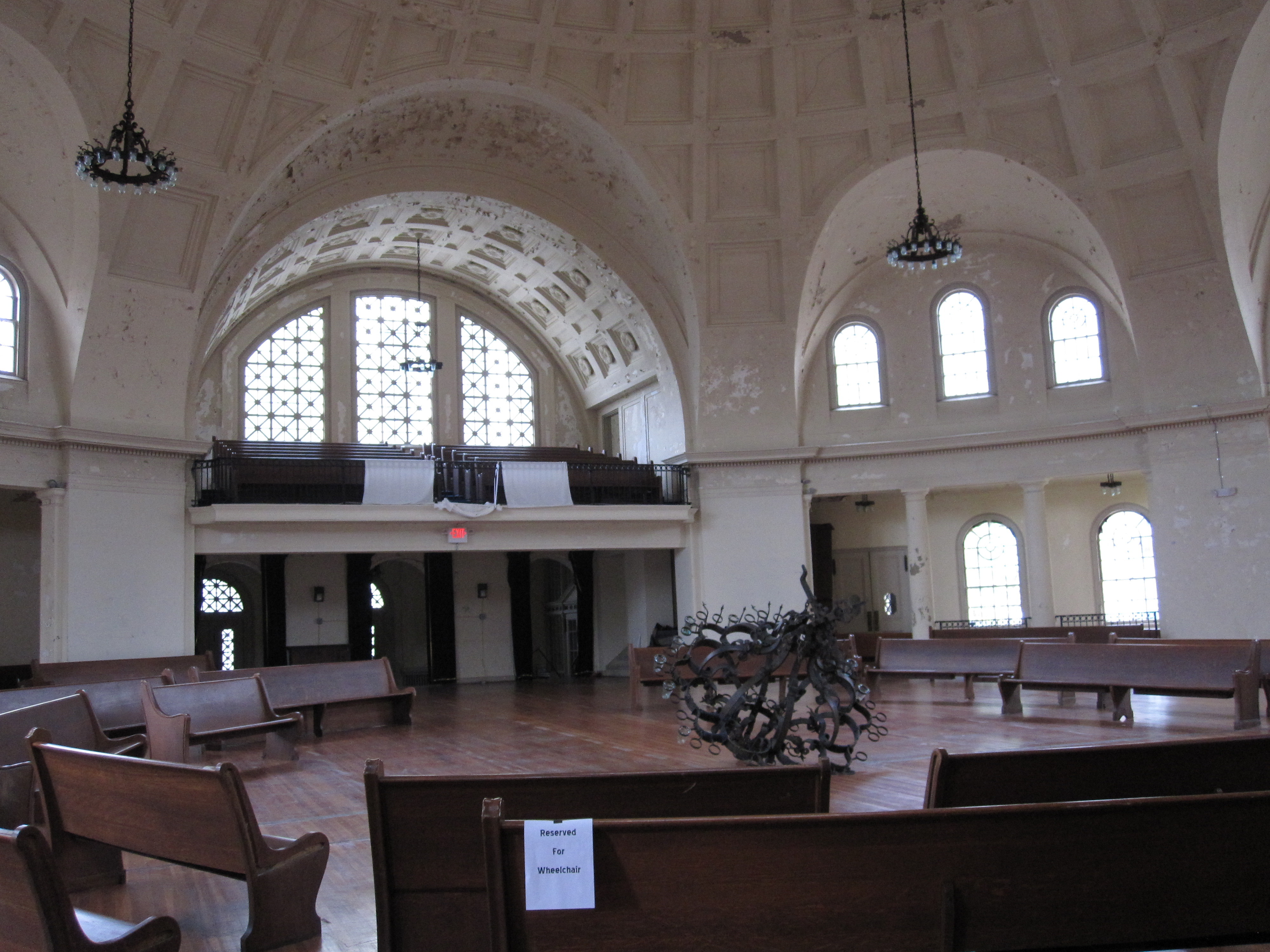
Class of ’08 | Try to envision the quintessential ballerina and you’re likely to conjure up someone like Julie Diana LPS’08. Her long, elegant neck and large brown eyes have led to frequent Audrey Hepburn comparisons. She’s petite but strong, with dark hair that curls into soft ringlets. Her voice sounds high and feminine, and there’s a musical quality to her speech. She pronounces it BAL-lay and says things like, “Ballet is so beautiful. I think everyone should experience it.”
Diana, who has spent the last seven years as a principal dancer for the Pennsylvania Ballet, has been dancing for most of her life. She grew up in northern New Jersey with a large poster of Mary Lou Retton on her bedroom wall, but while she dreamed of a gymnastics career, she shied away from the horse and the balance beam and any other events with high injury potential. She preferred the floor routines because she could dance, and eventually her coach pulled her mother aside and suggested she enroll Diana in ballet classes.
“My body was much better suited for ballet, anyway,” says Diana, who started her first class at age seven and graduated to the School of American Ballet at 12.
Growing up as a ballerina-in-training was “a huge commitment,” she says. “You learn from a very early age that it requires a lot of discipline and dedication and sacrifice. I never went to my school proms and I didn’t have much of a social life. Most of my friends were at the ballet. But I really loved what I was doing, and I had goals. I knew I wanted to be a professional dancer, and I knew what it took to do that.”
After joining the San Francisco Ballet at age 16, Diana spent the next decade pirouetting her way up from corps member to soloist to principal. She returned to the East Coast in 2004 to join the Pennsylvania Ballet, whereupon she applied to Penn’s College of Liberal & Professional Studies.
Though she’d been taking college classes “pretty much since I graduated high school,” she quickly “fell in love with Penn,” and kept adding to her course load—first taking one class at a time, then two, and eventually juggling three courses in a single semester. Since most of the LPS classes meet at night, she’d spend eight or nine hours in dance rehearsals, then dash across the Schuylkill to study writing and literature and oceanography and anthropology.

“My husband used to joke that he was going to paint a smiley face and tape it to the back of my head because that’s all he saw—me sitting at the computer,” she says. “But I just loved being in [an academic] environment. I love to learn; I love being in the classroom; I love intellectual discussions.”
Diana’s husband, fellow principal dancer Zachary Hench, played a starring role in an unforgettable performance—which took place right after the Pennsylvania Ballet’s 2005 production of Romeo and Juliet. She’d been dating him since her San Francisco days, and they’d been cast in the title roles for the Philadelphia production. After the curtain fell on their dual death scene, a friend handed something to Hench. When the curtain rose again for their final bows, Hench suddenly got down on one knee, engagement ring in hand.
“I forgot I was in front of 3,000 people and just threw myself at him,” Diana says. “The audience didn’t know what was going on at first, but when I held up my ring finger, they went crazy. It sounded like a sold-out Phillies game.”
Over the years, Diana has amassed plenty of behind-the-scenes stories from life in the ballet world. When a fire alarm went off in the middle of a performance in London, for example, the dancers finished the piece, then evacuated the theater along with the audience, ushers, and crew.
“We were standing outside for about an hour, freezing in our costumes and point shoes, and when we finally went back in—it turned out someone had put a baked potato wrapped in tin foil in the microwave—we still had to finish the performance,” she says.
Other memories center on her various injuries from over the years: stress fractures in her feet, a herniated disc in her neck, bone spurs, fractured ribs. Once, she was dancing on an outside stage just after it rained and slipped on the slick floor. Diana didn’t find out until after the performance that she had broken her wrist.
“I had to finish the show,” she says. “When you have an injury and don’t know how severe it is, you usually just keep going.” (She says injuries involving blood are the rare exception.)
But for all the unforgettable moments that come with live performance, Diana has also seen the dance world’s darker side.
“It’s definitely very competitive,” she says. “Some people get very into it, and they can become very catty and destructive. When a choreographer [comes in] to select people for a show, some people will run to the front of the room so they’re right in his face. There can be a lot of, ‘I’m in front. No, I’m in front,’ and, ‘You did five pirouettes so I’m going to do six.’ That kind of thing. My friends and I have always said that we have a bubble around us. We let the negative stuff bounce off us and always support each other.”
Having recently given birth to her second child, Diana was planning to return to work soon. She knows she can’t keep dancing professionally much longer—even five more years may be a stretch—but she’s at peace with that. Her body doesn’t rebound from injuries as quickly as it used to, and it doesn’t always move the way she wants it to.
“This job isn’t one that extends into your 40s,” she says. “Women tend to be done by their mid-30s, and that’s pretty much it. You have to enjoy it while you can; it’s very short, and it’s easy to take it for granted.”
Having written quite a few freelance articles for dance magazines, she has considered making writing her next full-time venture, though she’s still open to other possibilities.
“I’m really not quite sure yet,” she adds, “but I do know that I don’t want to stay solely in the ballet world. I’ve always felt that one of the benefits to having to retire so early was getting to have a whole other career afterward.”
And soon another dancer in the family may be taking center stage: her three-year-old daughter.
“I went to pick up some tickets at the Kimmel Center recently, and they had a huge model Eiffel Tower in the lobby,” Diana says. “Every hour they had a light show with music, and my daughter just ran under that model Eiffel Tower and started giving a [dance] performance. She didn’t care who was walking by or what was happening, she was just in the moment. That’s exactly the feeling we’re always trying to achieve as professionals.”
—Molly Petrilla C’06




